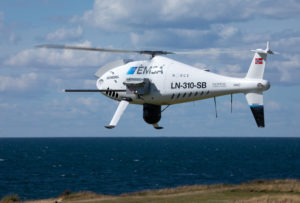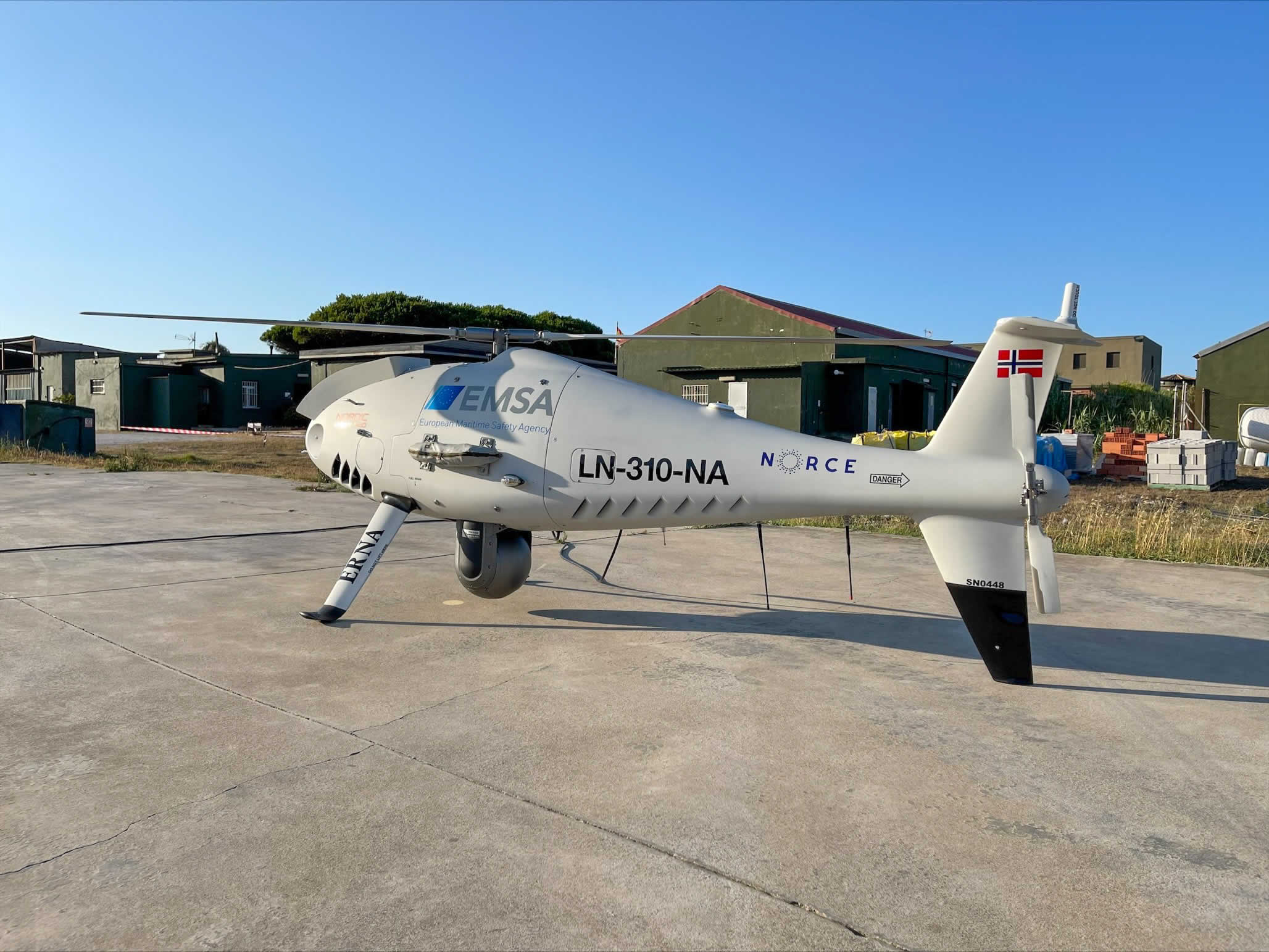Drones can more easily and effectively monitor our seas than manned craft. Their use in enforcement is growing and Nordic Unmanned is seeking to consolidate its position as a service provider with a new joint venure, Nuaer.
Airborne drones are certainly popular. Their uses range from the ski-loving You-Tuber wanting to capture every twist turn and jump, to parcel deliveries from logistics firms wanting to show off their technological prowess, conservation groups using them to count wildebeest on the savannah and whales in the ocean and governments wanting to monitor war zones, disturbances, and of importance for Fathom World readers, ships and offshore structures that need to control their emissions and discharges into the sea.
As well as being able to hover near a vessel and take photographs, check discharges into the sea, check vessel speeds, illegal fishing, migrants and drug running, drones can fly right into the exhaust trail of a ship to tell authorities within half an hour just how clean, or otherwise, a ship’s emissions are.
This take off of drone services has relied on two pieces of key technology, a suitably robust drone platform and the right sniffer technology able to get a good exhaust reading off gases and to send the data where it is needed.
While the drone market has been fragmented, one company in Norway, Nordic Unmanned is on a consolidation march.
Getting a good sniff
Nordic Unmanned has been in the business since 2014. Today it has contracts with a growing number of governments and businesses, including the European Maritime Safety Agency, Norwegian Authorities, UK authorities and Norwegian oil and gas conglomerate Equinor making it one of the biggest commercial drone operators in Europe.
The company was established by a trio of industrial investors with enough capital to successfully list the business in 2020 on the Oslo exchange. The capital raised has helped the group invest in three companies critical to their success in maritime drone deployment.
The first was the acquisition of a drone maker in Norway, Staaker, in 2019 just before it listed, giving the company its own drone platform. However, the company also uses a larger drone, the Camcopter S-100 made by Swiss drone maker Schiebel.
A second business that Nordic Unmanned has acquired to help build its presence in the marine monitoring market is Ecoxy, a Norwegian business that has a focus on monitoring and verification services, including ship emissions. The acquisition, completed in late 2021, brings in one of Norway’s only emissions monitoring providers that can add verification services to emissions data, a key element to any maritime authority that may wish to chase the owner or operator of a non-compliant ship through the courts.
Then late last year, 2021, Nordic Unmanned teamed up with privately-owned sensor maker Aeromon in Finland to form NUaer (a portmanteau-word of the two names) to bring a full service to its present and future government clients.
Formed in 2014, Aermon’s key product is a small sensor unit that weighs under a kilogram and is no more than 20cm x 20 cm in size. It has up to eight sensor ports that can have various gas sniffing modules attached, is connected to send the data ashore almost immediately as well as storing the data on a memory card if there is no connection. The data can be sent direct to shore databases and to government or commercial clients.
NUaer is now beginning to ramp up operations, bringing together Aermon’s sensing technology and the drone platforms of Nordic Unmanned. Chief Executive Kristin Alne is still the only direct employee in the venture, but she has recruited two other women who will start at the end of February, as technical and solutions directors as the company pushes its market presence.
It wil be taking over the NU contract for services for the European Maritime Safety Agency as well as searching for more. Alne lists a number fo ports and maritime administrations that have reached out to Nordic Unmanned seeking trials as they realsie the benefit of increased monitoring and enforcement
Data: the crime fighter
A drone really needs to get to within 25 m or 50 m of a ship’s exhaust plume to reach what Alne calls the ‘sweet spot’ of emissions detection. However, the larger camcopters are not taken in so close, she says. They will not go closer than 100 m to ensure that if there is a sudden fault the unit can do what she calls a wet landing. Ditching into the sea. Unlike the battery powered smaller drones the camcopter’s use aviation fuel.

The key to any enforcement is to get a reading from a ship when the vessel is in full sailing, said Alne, rather than when alongside and possibly switched to auxiliary engines. She said that the company uses dispersion algorithms that can determine how an exhaust plume is dissipating as the gases come out of the funnel. The company can give readings with an uncertainty of 30% she added. This means if the sensor gets a sulphur oxide emission reading of 0.13% on an emission control area then the likelihood is the vessel is using a compliant fuel. If the reading is around 0.5% then it suggests the vessel has either failed to switch over fuels as it came into an ECA or is deliberately non-compliant, either way giving authorities a reason to send inspectors onboard when the vessel berths to take fuel samples.
The current arrangement with emission monitoring with drones is not to use the drone sensor like a highway police officer would use a speed camera and issue on-the-spot fines. The readings do not have that legal certainty yet, said Alne. The readings would rather be a tool to allow port state authorities to better select which vessels should be boarded and inspected. However as and when the data gets the verification, through Ecoxy it will make enforcement a much quicker process.
And then the authorities will have a much more powerful tool especially as enforcement drones have the ability to measure a range of different emissions that may also fall under future emissions regulations.
































